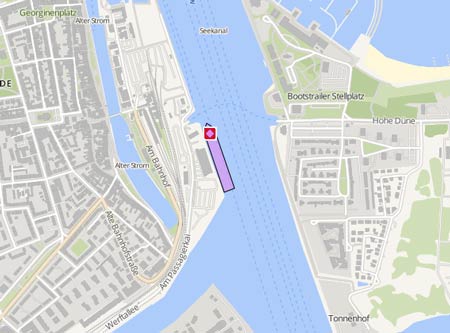EL FAROscrapped
Course/Position
Latest ports
Latest Waypoints
Latest news
NTSB Video Details the Investigation of the Sinking of U.S. Cargo Vessel El Faro
The investigation into the sinking of American cargo ship El Faro was one of the most complicated maritime investigations ever undertaken by the National Transportation Safety Board. In this 15 minute video, the NTSB summarizes the 2-year investigation into the October 1, 2015 sinking of the ship and the loss of all 33 mariners aboard. It also examines the NTSB’s determination of the cause of the accident and discusses associated recommendations to improve marine safety, as well as highlights the three missions undertaken to retrieve the voyage data recorder and document the wreckage at a depth of 15,000 feet beneath the ocean surface. https://youtu.be/66bvIgfHwYU
NTSB published full report
On Feb 7, the U.S. National Transportation Safety Board (NTSB) released its final report on the "El Faro" sinking in October 2015. Like the U.S. Coast Guard Marine Board of Investigation, the NTSB concluded that the accident was attributable to the master's decision to sail into Hurricane Joaquin, the vessel operator's "weak" safety culture and a poor implementation of Bridge Resource Management (BRM) principles. NTSB also noted technical problems with machinery design standards for sustained angle of inclination, a central factor in the El Faro's loss of lube oil suction and loss of propulsion; the limited protection of fire mains from impact damage in the event of a cargo shift, which was a likely factor in the flooding of El Faro's Hold 3; and the inadequacy of El Faro's antiquated open life boats, which were unlikely to be of assistance in a hurricane. Full report: https://www.maritime-executive.com/article/ntsb-releases-its-final-report-on-the-el-faro-tragedy#gs.kHznb1k
Congressional Panel Takes Up El Faro Inquiry
Another fact-finding expedition into why the "El Faro" sank in the Caribbean two years ago was set to take place on Jan 30, 2018, in Congress. After extensive hearings in Jacksonville and Washington, the National Transportation Safety Board and U.S. Coast Guard have blamed the sinking and death of 33 crew members on a combination of a lax corporate safety culture, inadequate ship inspections and poor decisions by Captain Michael Davidson. Both groups recommended doing away with an exemption for older ships that allows them to use open lifeboats instead of modern, covered models. That would require an act of congress. Now the House Subcommittee on Coast Guard and Maritime Transportation will continue the inquiry. Chairman Rep. Duncan Hunter (R-California) was interested in potential legislation.
Upload News

